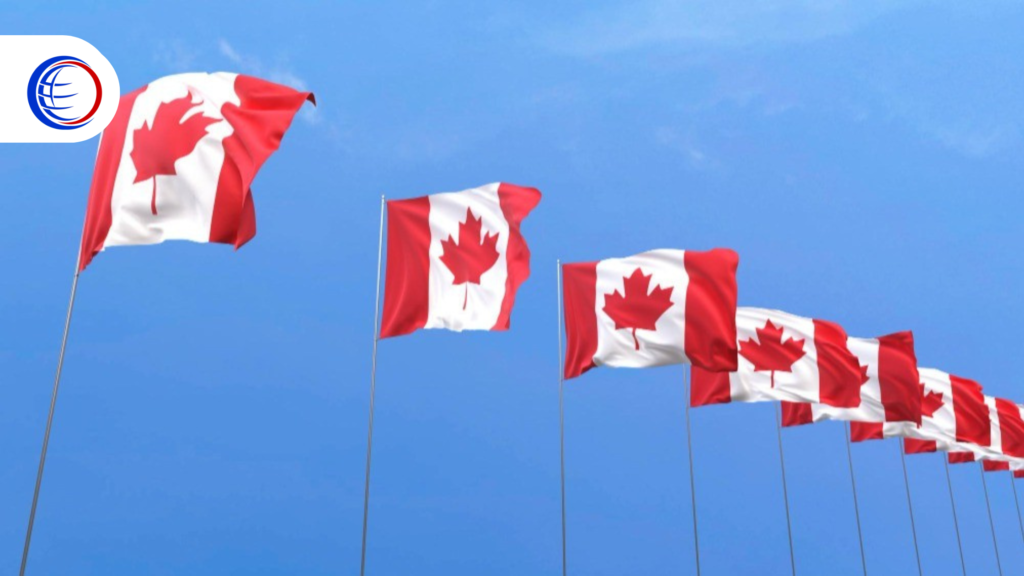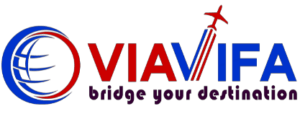Canada Immigration Level Plans (2025 - 2027): Evolving Strategies for Growth and Stability

As one of the most popular destinations for immigrants worldwide, Canada continues to raise its annual immigration targets to address labor shortages and support economic growth. The recent release of the Immigration Level Plans for 2025 to 2027 offers valuable insights into the projected immigration landscape for the coming years. Canada aims to welcome over 500,000 immigrants annually by 2027, reflecting its commitment to economic growth, demographic balance, and strengthening diverse communities.
These updated Immigration Level Plans signal a balanced and intentional approach to population growth, focusing on sustainable immigration rates, increased economic contributions, and strategic support across provinces. This framework is essential for both immigrants and industry professionals, highlighting Canada’s dedication to growth, demographic stability, and community support.
With a target of welcoming 395,000 new permanent residents in 2025, Canada’s strategy emphasizes managed growth, economic contributions, and strengthened family and humanitarian commitments.
Why Canada’s Immigration Levels Plan Matters
Canada’s economy is facing a critical need for skilled labor, particularly in fields such as technology, healthcare, and construction. To address this shortage, the government is focusing on attracting immigrants who can fill these roles, sustain economic growth, and contribute to the social fabric of the country. VIAVIFA Global Immigration Services offers comprehensive guidance to applicants, ensuring that every step aligns with Canada’s immigration standards and individual goals.
Key Components of Canada’s Immigration Strategy
Canada’s Immigration Targets: Focus on Managed Growth
Permanent Residency: Canada is set to welcome approximately 395,000 new permanent residents in 2025, with a steady rise each year to address long-term workforce needs and demographic challenges. This gradual growth target ensures stability in housing, education, and public services.
Temporary Residency Goals: Temporary residents, including skilled workers and international students, will comprise around 5% of Canada’s population by 2027. This approach aims to meet immediate labor needs, particularly in key sectors, without overwhelming community resources.
Economic Pathways and Regional Immigration Targets
- Economic Programs: Canada’s Provincial Nominee Programs (PNP) are set to drive immigration to areas facing labor shortages, ensuring provinces can meet regional workforce needs. This shift allows Canada to address industry-specific demands for skilled professionals in technology, healthcare, construction, and agriculture.
- Economic Pathways: Economic immigration programs like the Express Entry, PNP, and Canada’s Start-up Visa will account for the majority of immigration allocations. Canada aims to welcome over 60% of immigrants through these economic pathways to address skill shortages.
- Francophone Immigration: Canada is prioritizing Francophone communities outside Quebec, aiming for 8.5% of admissions through Francophone programs by 2027 to support cultural diversity and ensure French-speaking communities thrive across the nation.
- Expanding Regional Programs: Recognizing the potential of rural communities, Canada’s plan includes programs like the Rural and Northern Immigration Pilot (RNIP), aimed at bolstering smaller regions with essential skills and resources.
- Increased Provincial Autonomy: Through the PNP, Canada allows provinces and territories more control in selecting immigrants who match their regional needs, facilitating pathways for international students, skilled workers, and entrepreneurs to settle in less-populated areas.
Family Reunification and Humanitarian Commitments
- Family Reunification: Ensuring families stay connected remains a core component of Canadian immigration policy, with strong allocations for family sponsorship programs. This focus enhances social support for newcomers and encourages long-term settlement in Canada.
- Family Sponsorship Programs: The government aims to streamline and expand programs for spouses, partners, children, and parents to ensure families are reunited promptly after meeting eligibility criteria.
- Refugee and Humanitarian Support: Canada maintains robust targets for refugee programs, ensuring support for global humanitarian needs, including responses to international crises and conflicts. The country is committed to providing safe harbor to those fleeing conflict or persecution.
- Support for Refugees: Canada will increase its intake of refugees and continue its role in global refugee resettlement efforts, setting aside spots for displaced individuals.
- Humanitarian Support: Canada’s approach to immigration is deeply rooted in humanitarian values, welcoming refugees and displaced individuals into a safe and inclusive environment.
These initiatives make Canada an attractive destination for those seeking new opportunities and a diverse, inclusive society.
How to Plan Your Application for 2025 - 2027
Identify the Right Pathway:
With diverse immigration pathways available, applicants need to choose the route that best suits their profile. Economic class programs are ideal for skilled workers, while family sponsorship may be suitable if you have relatives already living in Canada.
Stay updated on provincial programs:
Provincial programs often have specific criteria and may target particular industries or skill sets. Staying informed about changes in the PNP and applying through these programs can increase your chances of success.
Improve Language Skills:
Canada places a strong emphasis on English and French proficiency for economic immigrants. A high score on language tests like IELTS or TEF can boost your Express Entry Comprehensive Ranking System (CRS) score, enhancing your application prospects.
Strengthen Your CRS Score:
For Express Entry applicants, CRS points are critical. Gaining more work experience, improving language test scores, or studying in Canada can increase your CRS score and make your profile more competitive.
Preparing for the Future: Maximizing Opportunities in Canada
Strategic Pathway Selection:
Candidates should identify the most suitable immigration pathways for their profile. Economic pathways favor skilled workers, while family sponsorship suits applicants with relatives in Canada.
Enhancing skills and language proficiency:
Higher English or French proficiency directly boosts scores in pathways like Express Entry, making candidates more competitive. For applicants through Francophone immigration, proficiency in French is especially valuable.
Leveraging provincial programs:
Staying updated with provincial nomination programs increases chances of success, as these initiatives target specific industries and skill needs per province.
Preparing for Success
- Identify Your Pathway: VIAVIFA helps identify ideal programs tailored to your profile, from skilled worker routes to family sponsorship.
- Language and Skills Improvement: High language scores boost points in programs like Express Entry. VIAVIFA offers resources to help applicants improve English or French proficiency.
- Maximize Your CRS Score: Tips for enhancing your profile’s competitiveness, like adding Canadian work experience or education, make a big difference.
What This Means for Prospective Immigrants
Canada’s welcoming stance opens numerous pathways for skilled professionals, entrepreneurs, students, and families who wish to settle in a safe, progressive, and opportunity-rich country. For businesses, this strategy ensures a steady flow of skilled talent to drive innovation and productivity.
A Model for Other Nations!
Canada’s progressive approach to immigration is one that many countries are watching closely. Its emphasis on attracting skilled workers and prioritizing family reunification sets a model for other nations struggling with labor shortages and demographic challenges.
How VIAVIFA Can Help?
At VIAVIFA, we recognize that each immigration journey is unique. Our personalized approach ensures that clients receive clear, step-by-step guidance tailored to their specific needs. From the initial eligibility assessment to the preparation of documentation, submission of applications, and responses to inquiries from immigration authorities, we are dedicated to making the process as smooth and straightforward as possible.
VIAVIFA supports clients at every stage of their immigration journey, offering expertise and assistance in the following areas:
- Express Entry and PNP Applications: We provide personalized guidance to enhance eligibility and success rates in Canada’s economic immigration programs.
- Family Sponsorship: Our experts assist in reuniting families, ensuring compliance with program requirements, and facilitating a seamless process.
- Temporary Residency: We offer guidance on study permits, work permits, and other temporary residency options, making transitions smoother for our clients.
Conclusion
The 2025-2027 Canada Immigration Level Plans reflect the country’s commitment to creating a welcoming and prosperous future for new immigrants. These targets are designed to strengthen the Canadian economy, reunite families, and uphold Canada’s reputation as a leader in global humanitarian efforts.
Canada’s immigration strategy is comprehensive, focusing on economic stability, community support, and sustainable growth. For those considering immigration, Canada’s door is wide open, offering a promising future in one of the world’s most welcoming nations. By aligning personal profiles with Canada’s pathways, prospective immigrants can optimize their chances of making Canada their new home.
With a focus on economic growth, diversity, and regional development, now is an ideal time for skilled professionals, families, and aspiring citizens to consider Canada. VIAVIFA provides the expertise and support needed to navigate these opportunities, ensuring that applicants can take full advantage of Canada’s welcoming immigration policies.
To explore your options in Canada’s new immigration landscape, contact VIAVIFA for a consultation. Our comprehensive support includes tailored consultations, eligibility assessments, and expert assistance with documentation, maximizing your chances of success.
